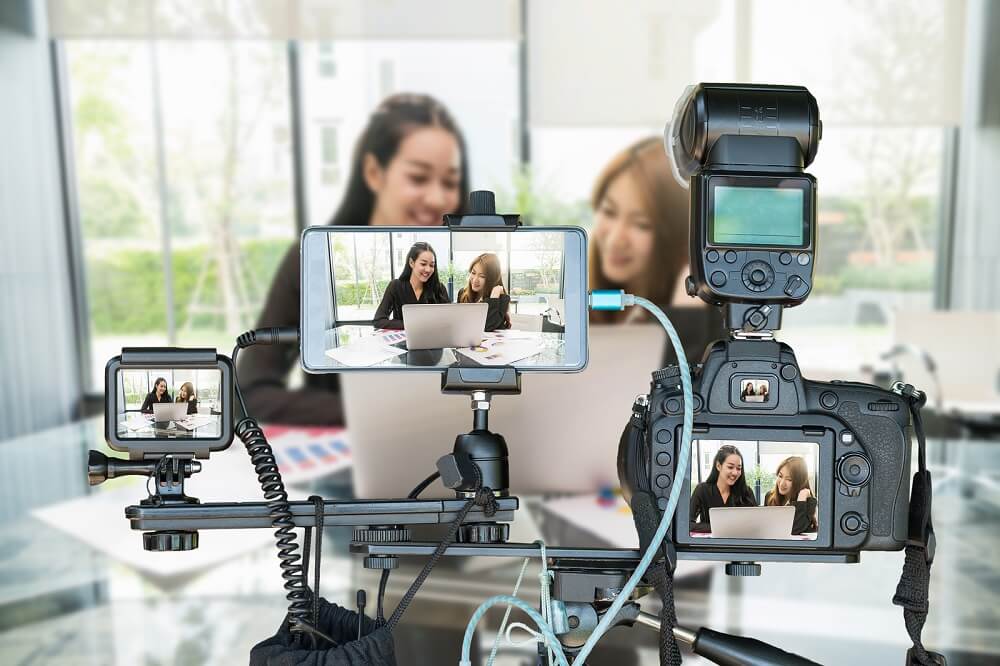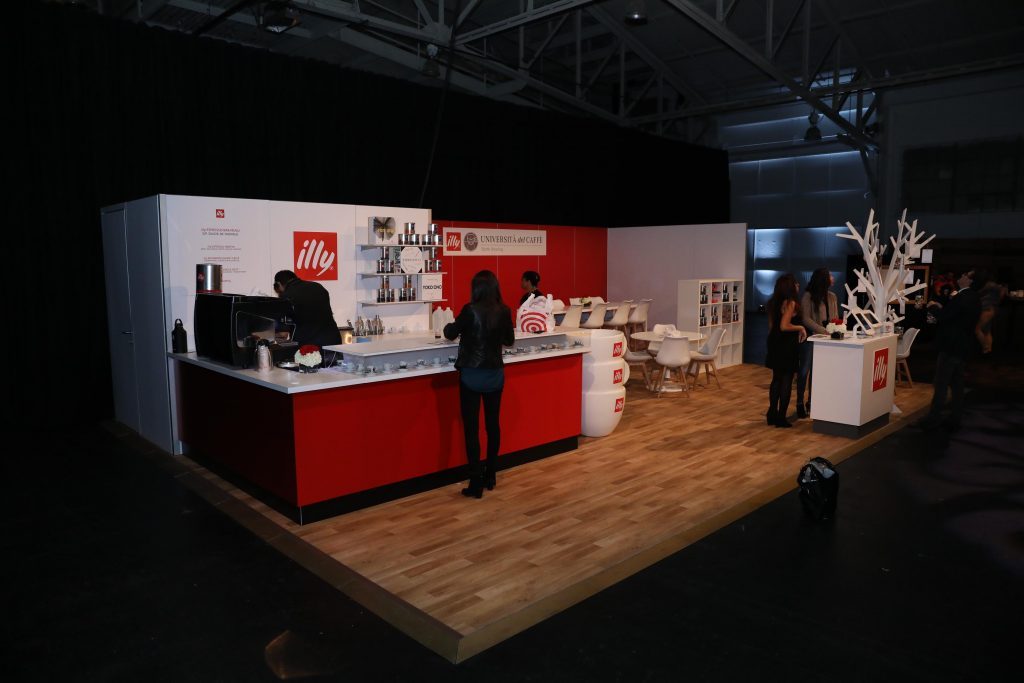Event promotion is all about getting your event brand noticed, engaging your target audience, and distinguishing your event brand from your competition. Deployed with thought and care, social media can help you achieve all three goals. To create a solid event social media plan, it’s important to develop strategies that don’t stop when the event starts. The most effective social media event promotion continues throughout the event, and afterwards, to maximize your exposure and event ROI.
Social Media for the Pre-Event Buildup
In the lead-up to the event, it’s important to make sure your social media reach is as extensive as possible. Your goal is to build excitement and anticipation by making connections between your brand and your target audience.
1. Identify Your Audience
Always an important part of any marketing campaign, it’s just as vital on social media. When you’re crafting posts and tweets, you need to know who you’re writing them to. Once you , you’ll know the right things to say to pique their interest.
It’s often tempting to market to broad audience definitions in the hope that you’ll reach more people. Yes, you might reach more people, but many of them will be people who just aren’t interested in your event. If your marketing messages aren’t well-defined, you risk alienating the attendees who should be there!
The first and most important step is always to figure out who your audience is. Once you know them, you’ll know how to reach them.
How to Find Your Audience
2. Create Effective Hashtags
Event hashtags are useful because they give you a way of collating and organizing event content on social media. They also help you connect with your audience because when social media followers use your event hashtag, their posts become part of the whole story of your event.
The most effective hashtags keep it simple. You don’t need to go overboard thinking up clever phrases trying to coin new words. Usually, a simple combination of the event name and year is fine. #EVENTNAME2021 may not be fancy, but it’s simple and logical, and that makes it easy for your audience to remember. Hashtags are generally most effective on Twitter, but if you’re using Facebook or Instagram, make sure to use your event hashtags there too.

3. Choose the Right Platform
Knowing your audience is such an important first step of event social media promotion because it also determines where you’ll find them. The demographics of people who use Facebook are different from those who use Twitter, Instagram, and LinkedIn. If you already have accounts on all the major channels, you can focus on the channels that have the highest engagement. Otherwise, it’s a matter of matching your target demographics to the platform.
4. Match Your Content to the Platform
If you have only a limited amount of time to spend on your event social media plan, it can be worthwhile to focus your efforts on one platform. However, it is generally more effective to target multiple social media channels and post different kinds of content on each one. Providing your content is aimed at the right demographic, it all contributes to the overall success of your campaign.
It’s also important to post content that’s appropriate for each platform, bearing in mind that what works on one doesn’t necessarily work on the others. For instance:
- Promote the event on your company’s LinkedIn page, and use the Events feature to create a page for it. Add content that highlights the event’s value and potential ROI to your audience.
- On Facebook create an event page, and keep both that and your company’s page updated with details about the event. Post content that sparks discussion, for instance by asking people what they’re most interested in about the event or what they’d most like to see added.
- Use Twitter to keep your audience updated on new developments, such as a new speaker or sponsor, or a reminder to purchase tickets at early-bird prices.
- Share visual content on Instagram, such as promotional clips of speakers and photos from previous corporate events.
5. Work with Industry Influencers
Influencers whose reach covers your target demographic can help you connect with your audience. Look for people who are well-respected thought leaders. You can often find them by keeping an eye on relevant hashtags on Instagram and Twitter and in groups on Facebook and LinkedIn. Reach out with details about your event, and ask if they’d be interested in making one or more promotional posts.
Another option is to work with the people who’ve already agreed to come on as speakers, panelists, or other even guests. They’ll typically be happy to publish some promotional posts on their own accounts, since it helps them reach their own audiences, too.
6. Be Consistent, but Don’t Overload Your Audience
Consistency is a vital part of social media event promotion. Across all the social media channels you use, make sure you’re using the same visual elements, including logo, colors, images, and even fonts. It all goes towards creating a strong online presence.
To make sure you’re getting all the important information across, plan out your social media campaign for the weeks leading up to the event. You want to publish new content regularly to help establish your event brand and messaging and to strengthen brand recognition. But don’t make the mistake of flooding your audience with multiple posts every day—people may start to ignore them or tune them out if there are too many.
Keep the Momentum Going During the Event
Your pre-event social media plan is all about building up interest and momentum ahead of time. Once the event begins, your focus should move away from telling people what’s going to happen and towards giving updates on what is happening. Your social media channels can keep people updated on the event schedule as it unfolds, post highlight clips or takeaway messages from your speakers, and give your attendees a place to talk about the event.
1. Encourage Attendees to Use Your Event Hashtag
Make sure your event hashtag is prominently displayed at the event, so people know where to go for up-to-date news and information. For live events, include the hashtag on any signage and printed materials you use, as well as in your event mobile app. For , you can display your event hashtag on the event platform, broadcast it in chat channel, and add it to lower-third graphics on live and recorded video content.
2. Include a Social Media Wall
For both live and virtual events, displaying a social wall can boost your visibility to event attendees. At live events, it can take the form of one or more screens that are set to display social media feeds. For virtual events, social media feeds can be integrated into your event website or platform so people can read and post to your social media channels without having to exit the event.
3. Livestream Content to Social Media
For live events that don’t have any virtual components, you can still put some of your event content online as it happens, via livestreaming. Both YouTube, Facebook, and Instagram have livestreaming features you can use to post content teasers, behind-the-scenes snippets, and other clips to showcase the best of your event content.

Post-Event Social Media Plan
Your corporate event is over, but the opportunities for visibility and connection on social media are far from it! You can continue to boost audience engagement by posting highlights of the event and promoting testimonials from attendees. This kind of content is also ideal to use in the buildup to your next event.
1. Promote Attendee Experiences
One of the reasons people attend industry events is for networking and making connections. After the event is over, highlighting your attendees is a great way to build on your event’s social media plan, and keep the engagement going.
Your event hashtag makes this easy, as all you need to do is sift through the hashtag feed to find this content. For suitable posts, just retweet or share to promote it on the event account.
2. Post Video Highlights of Key Moments
If you have recorded video content from the event, post a highlights reel and other video snippets to keep the conversation going. Follow that up with a wrap-up post that summarizes the key moments and messages from the event, along with some related images. You can also ask people to comment and share their own event highlights to further increase engagement.
3. Share a Survey
A post-event survey can help you find out exactly what attendees liked about your event and what they think needs improvement. The first few days after the event is the best time to ask, when momentum and engagement are still there, and it’s all fresh in their minds. You can send out survey invitations via email, but sharing it on social media gives you another way of reaching people.
Spread the Word: Social Media Is the Ideal Place for Effective Event Promotion
Around half the people in the world use some form of social media, so it’s no surprise that these platforms are such effective promotional channels. With the right combination of audience, platform, and content, you can develop a winning social media plan for your next event—one that engages attendees and maximizes your event ROI.









